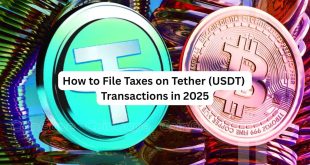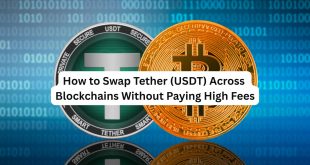Web3 isn’t just a buzzword — it’s a fundamental shift in how we think about ownership, trust, and value on the internet. Whether you’re a developer, entrepreneur, or investor, understanding how to build a Web3 business model is key to tapping into the next era of online innovation.
In this guide, we’ll break down what a Web3 business model looks like, core components you need to consider, and how to start building one that’s both sustainable and decentralized.
🧠 What is a Web3 Business Model?
A Web3 business model leverages blockchain technologies, smart contracts, and tokenized assets to create decentralized applications (dApps) that are community-driven, transparent, and often permissionless.
Unlike Web2, which relies on centralized servers and profit-driven platforms, Web3 empowers users through ownership and incentives, such as tokens, NFTs, and governance rights.
🧱 Core Components of a Web3 Business Model
To build a solid Web3 business, you need to understand these foundational elements:
1. Tokenomics
Tokens are central to most Web3 businesses. You’ll need to decide:
- Type of token: Utility, governance, or security token?
- Total supply: Fixed or inflationary?
- Distribution: Who gets how much — team, community, investors, treasury?
- Utility: What can users do with the token (e.g., access, voting, staking)?
2. Decentralization Strategy
How decentralized will your platform be?
- Early-stage projects may be partially centralized.
- Over time, transition to DAO governance is common.
- Tools like Gnosis Safe, Snapshot, and Aragon can help manage decentralized operations.
3. Monetization Models
Yes, Web3 businesses can be profitable. Some common methods:
- Transaction fees (e.g., Uniswap charges fees per trade)
- Premium features or services
- Staking and yield mechanisms
- Token sales (IDOs, ICOs)
- NFT sales or royalties
4. Community Incentives
Community is king in Web3. Incentivize early users and contributors with:
- Airdrops
- Referral rewards
- Governance voting rights
- Contributor bounties
🚀 Steps to Build Your Web3 Business Model
Here’s how to get started:
Step 1: Identify a Real Problem
Just like in traditional startups, find a pain point or unmet need — especially one where trust, transparency, or ownership is important.
Step 2: Choose the Right Blockchain
Different blockchains suit different use cases:
- Ethereum for mature infrastructure and smart contracts
- Polygon, Solana, or BNB Chain for lower fees and faster transactions
- Arbitrum, Optimism for L2 scalability
Step 3: Design Your Token Economy
Create a tokenomics model that aligns user incentives with your business goals. Avoid pump-and-dump schemes — long-term value beats short-term hype.
Step 4: Develop a dApp or Platform
Build your decentralized app using smart contracts (e.g., Solidity for Ethereum), and connect it with a frontend using Web3 libraries like Web3.js, Ethers.js, or Wagmi.
Step 5: Build and Activate Your Community
Launch with transparency. Use platforms like Discord, Twitter, or Lens to engage users, explain your mission, and reward early adopters.
Step 6: Launch with Purpose
Start small. Use testnets, audits, and MVPs to prove value. Consider launching a token or NFT collection once the community sees utility.
⚖️ Final Thoughts
Building a Web3 business model means thinking beyond profits — it’s about creating value that is shared, governed, and grown by the community. When done right, Web3 unlocks more than just revenue — it unlocks resilience, trust, and freedom.
So whether you’re starting a DeFi platform, an NFT marketplace, or a decentralized social app, build with purpose, decentralize with intention, and always keep your community at the center.
 UBUCH ubuch | Honest Tech Reviews & Tutorials for Everyone
UBUCH ubuch | Honest Tech Reviews & Tutorials for Everyone




